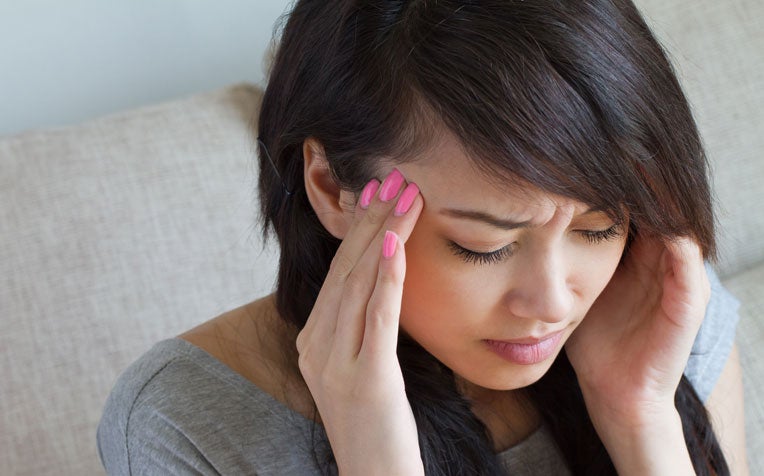
Migraines can be trigged by stress, irregular meals, and lack of sleep.
Everyone gets a headache from time to time. For most, it is an infrequent annoyance that comes and goes. For some people, the headache is a full-blown migraine attack, complete with nausea and vomiting. When are your headache symptoms a serious cause of worry? And can headaches and migraines be prevented?
The Department of Neurology from National Neuroscience Institute (NNI), a member of the SingHealth group, tackles these and other questions head-on.
What are the characteristics of a migraine?
“Apart from more severe pain, a migraine is usually associated with nausea and vomiting, as well as sensitivity to light, smell and sound,” explains doctors from the NNI Department of Neurology.
In addition, about a third of patients with migraine have warning signs called aura, which precede the pain. For example the patient may see zigzag lines or flashing lights (visual warning signs) or experience a tingling or numbness in the limbs (sensory symptoms).
Migraine pain also tends to be on one side of the head. The pulsating or throbbing pain is typically of moderate to severe intensity. Physical activities will tend to worsen the migraine.
There are many types of migraine. The most common is the migraine without aura (visual or sensory disturbance before your headache begins), followed by those with aura. Many other subtypes exist, depending on the type of aura, as well as the duration and frequency of attacks.
Primary vs secondary headaches
Migraines are categorised under primary headaches, which refer to headaches with no underlying worrisome cause.
Primary headaches also include tension headaches (which affect up to 90 per cent of adults in their lifetime) and cluster headaches (a rare type of headache that affects mainly men in their late 20s).
Secondary headaches, on the other hand, stem from an underlying brain disorder. They could be due to a brain infection, abnormal intracranial pressure, bleeding, stroke or brain tumour.
“Based on your medical history and physical examination, your doctor should be able to advise if your headache is likely to be primary or secondary, and if further tests are required,” shares the NNI Department of Neurology.
What are the common causes of migraine?
Like most primary headaches, a migraine tends to have a genetic basis, meaning it runs in the family. If you suffer from migraine headaches, you probably have family members that are sensitive to the same migraine triggers as you.
These triggers can include:
- Environment – weather, light, smell and sound
- Lifestyle – poor sleep, stress and irregular meals
- Diet – certain foods and drinks including coffee, cheese and alcohol
- Emotional and hormonal factors
If a certain trigger is known to cause your migraine, avoidance of this trigger is naturally recommended. An effective way of identifying such triggers is to keep a headache diary.
How are migraines treated?
There are two main approaches when it comes to migraine and other primary headaches:
- Symptomatic treatment – This helps to relieve the pain symptoms. Non-steroidal anti-inflammatory drugs (NSAIDs) are usually the treatment of choice. Other treatment options include triptans, which are specific anti-migraine drugs. However, these medications should not be used more than twice a week to avoid medication overuse.
- Prophylactic treatment – Prophylactic or preventive therapy aims to reduce the overall frequency of attacks and is usually reserved for those whose migraine attacks are frequent and severe enough to affect their daily life. Medication is usually taken daily for at least 4 to 6 months or until the symptoms are better controlled.
The use of Botox has also been found to reduce the frequency of headaches in chronic migraine cases.
What can I do to prevent migraines?
Avoiding known triggers is one way to prevent migraine symptoms. Regular exercise, proper diet, avoidance of smoking as well as adequate sleep and rest are also recommended.
Another tip is to learn to better cope with stress. You may want to consider signing up for courses teaching relaxation techniques and exercises.
Ref: R14
Check out our other articles on headaches:
Primary vs Secondary Headaches
Contributed by















 Get it on Google Play
Get it on Google Play